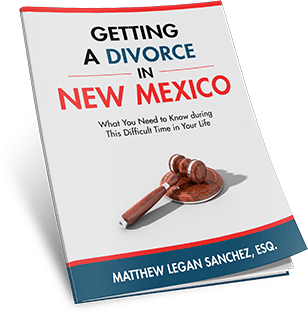
Understanding the differences between restraining orders and no contact orders can empower victims of family violence or abuse. For instance, this knowledge can help you make informed choices to protect yourself and regain control of your life.
In this article, we’ll explore these two legal tools and shed light on how they differ in terms of their purpose, scope, and enforcement. By providing clear insights into the nuances of restraining orders and no contact orders, victims can achieve a better understanding about our complex legal system.
You see, our legal system’s laws and procedures can confuse and overwhelm people that are not legally trained or educated. This article provides victims and falsely accused with a deeper understanding of protective orders in Albuquerque, New Mexico.
Are you seeking to prevent an abusive family member, spouse, or partner from approaching you? Alternatively, do you want to ensure that a harassing person or stalker keeps their distance from you?
If so, understanding the specifics of these orders can be the difference between fear and safety.
Empower yourself today by diving into this article. In doing so, you can take a swim through the legal system and better understand the mysteries and differences between restraining orders and no contact orders in Albuquerque, New Mexico.
This essential information can equip you with the information needed to protect yourself against an abusive, harassing, or stalking spouse, partner, or person.
UNDERSTANDING RESTRAINING ORDERS AND NO CONTACT ORDERS
Restraining orders and no contact orders are both tools that protect victims of family violence or abuse.
At their core, both orders prevent an abuser from contacting or coming within a certain distance from the protected party.
Nevertheless, there are some core differences between the two protective orders.
KEY DIFFERENCES BETWEEN RESTRAINING ORDERS AND NO CONTACT ORDERS
The key difference between a restraining order and no contact order is that a restraining order can be enforced by the police. Moreover, violating a restraining order can result in one being immediately arrested, booked, and facing criminal charges.
In other words, a restraining order has more “bite” and can be readily enforced by a police officer.
Conversely, a no contact order generally must be enforced through the courts. For example, a no contact order usually is enforced through a Motion to Enforce, or Motion for Order to Show Cause.
Although violating a no contact order can result in incarceration, a judge must order incarceration after the motion has been filed and properly served. Most importantly, police usually only become involved when a restraining order of protection is violated. Police usually do not become involved when a no contact order is violated.
Instead, police generally refer victims to file the appropriate motion alleging that a violation has occurred.
In sum, violating a restraining order of protection can result in immediate police involvement. This involvement can result in arrest, criminal charges, and incarceration or fines.
On the other hand, the police usually do not become involved when a no contact order is violated. Instead, the victim usually must pursue the violation through the court that granted the order – not the police.
The final key difference between the two orders is that a restraining order of protection usually prevents the restrained party from owning or possessing a firearm while the order is in place. However, a no contact order does not prevent the restrained party from owning or possessing a firearm.
SIMILARITIES BETWEEN RESTRAINING ORDERS AND NO CONTACT ORDERS
Restraining orders and no contact orders also have several key similarities.
First, both protective orders prevent communication or contact between two parties. For example, both restraining orders and no contact orders usually prevent communication between the parties – and abusive communication with the protected party’s family.
However, a no contact order entered in family court may enable the two sides to communicate regarding issues that impact the child. In this regard, the order may enable the two sides to communicate through a third-party program such as Our Family Wizard, or AppClose.
What’s more, both orders usually prevent the abuser from having contact with or coming within 100 yards of the victim.
No contact orders can also contain other limitations or requirements that can be found within a restraining order of protection. In this respect, the parties can agree to language that is included in the no contact order that may overlap with a restraining order of protection.
HOW TO OBTAIN A RESTRAINING ORDER IN ALBUQUERQUE, NM
You can obtain a restraining order of protection by filing a Petition for Order of Protection with the District Courthouse in your county.
In Albuquerque, victims of family or household abuse can request a restraining order through Second Judicial District Courthouse in Bernalillo County.
Alternatively, Rio Rancho residents can request a protective order through Thirteenth Judicial District Courthouse in Sandoval County.
Victims of family abuse or household violence can file a restraining order under the Family Violence Protection Act.
Check out this informative video for more information on how to obtain a restraining order in New Mexico.
HOW TO OBTAIN A NO CONTACT ORDER IN ALBUQUERQUE, NM
A no contact order is usually entered within a divorce or paternity case. In some cases, the parties may agree to dismiss a pending restraining order, agreeing that a no contact order will be entered in the divorce or paternity matter.
In other words, a no contact order is commonly entered in family court matters.
However, a no contact order may also be entered as a condition of release within a criminal case. For example, a no contact order may be entered in connection with a criminal charge for domestic violence.
WHO CAN REQUEST A RESTRAINING ORDER OR NO CONTACT ORDER
A victim can request a restraining order of protection against an abuser that is a “household member.” In New Mexico, the term “household member” is widely defined and can include anyone with whom you have had an intimate and continuing relationship.
However, you usually cannot request a restraining order of protection against a neighbor – or your spouse’s new spouse or partner. In other words, you can only request a restraining order of protection, under the family violence protection act, against a household member.
Nonetheless, you can request a civil restraining order against neighbors and non “household members.”
Finally, a no contact order is usually requesting within a divorce or paternity case. So, a no contact order can be entered within your pending family law matter.
Check out this video to understand how restraining orders and divorce cases intersect.
VIOLATIONS AND CONSEQUENCES OF RESTRAINING ORDERS AND NO CONTACT ORDERS
Violating a restraining order can lead to significant consequences. First, violating a restraining order of protection can lead to an immediate arrest, or criminal summons.
Moving forward, criminal charges can be filed for violating the restraining order.
In other words, violating a restraining order can lead to an arrest, criminal charges, and incarceration or fines.
On the other hand, violating a no contact order usually results in a motion be filed in the family court matter. This motion puts the assigned judge on notice that a violation has occurred.
The violation can result in sanctions. These sanctions can include the violator being held in contempt of court. Also, the sanctions can include an award of attorney fees, negative impact to one’s child custody matter, or potentially incarceration.
With that said, violating a restraining order of protection usually flows through the police. Alternatively, violating a no contact order usually flows through the family court that entered the order.









